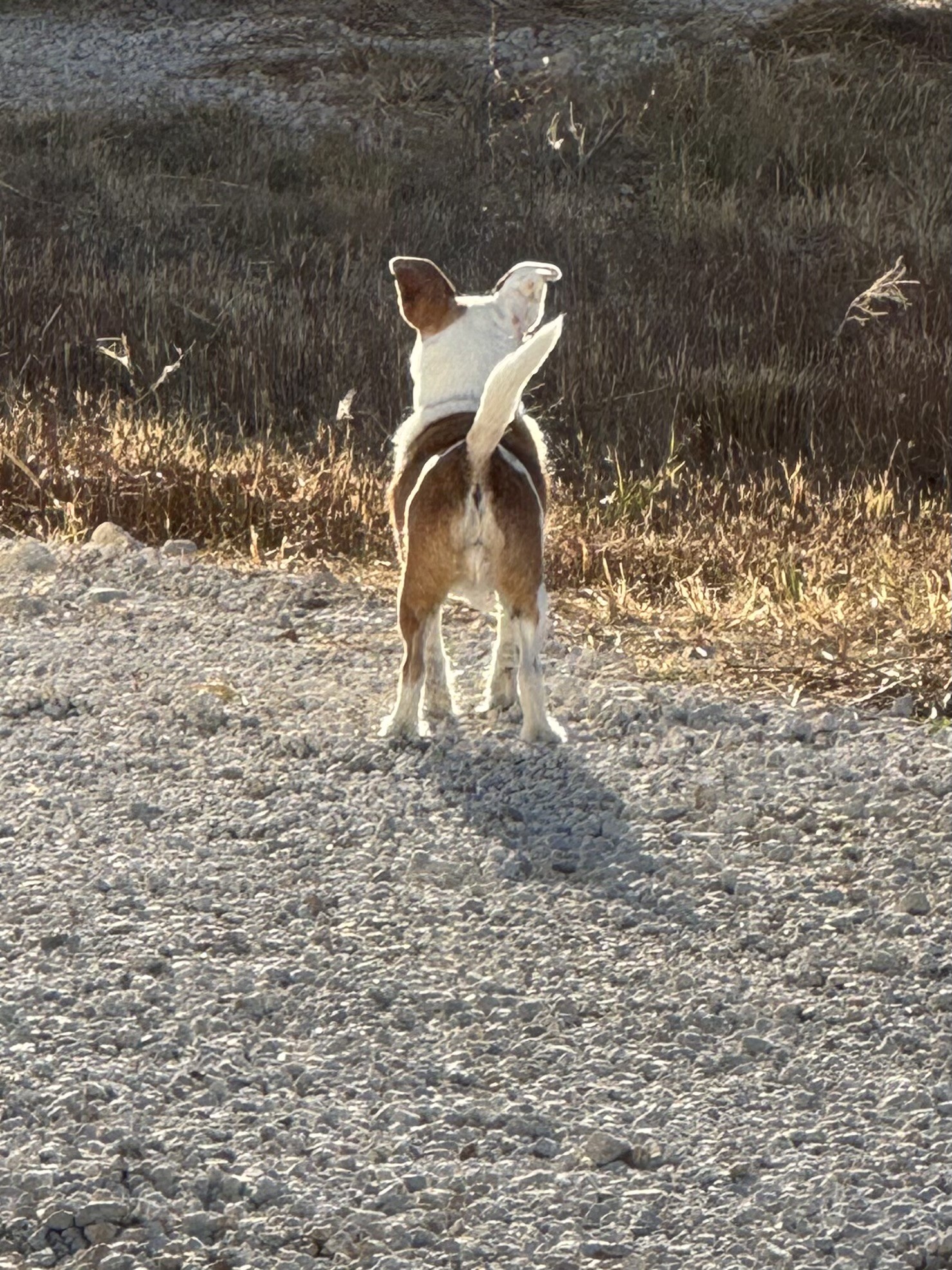News, ideas & inspiration from industry leaders

So It’s Not All Going to Sh*t. But Something Might Be…
Dr. Weiss shares opportunities to uncover challenges that may be increasing risk in your shelter

Earlier this year I shared with you a blog proposing the idea that sheltering is not all going to sh*t. While the numbers indicate this is true, there are some places that certainly need attention. Now it is time to start to dig in to figure out what may be going to sh*t in your facility and what we can do to fix it.
Before we dive in, it may be helpful to start with a new pair of glasses. I often have to remind myself that much of what I think and feel is significantly influenced by my perspective at the time. There is a pervasive feeling that I have observed in shelter staff and volunteers, especially of late, that the work is little else than horrible and sad. That having to “deal with the uncaring public” and “clean up their messes” is just a never-ending rush of water through the broken dam. What if, instead, we pulled back and refocused? Let’s remember we are in this field to shelter. While I recognize it is hard, and sometimes absolutely gut-wrenching work, if we can focus on celebrating that we exist to serve the at-risk animals and their people in our communities, that alone can help shift from a feeling of sadness to a feeling of pride and hope.
Next- The feelings of hopelessness can also be driven by the failure of newly implemented programs. I would say that the one of the biggest mistakes I see groups making is to implement a program before understanding the data. Not only do we not know the extent of the issue when we do this, we don’t have the ability to measure the change when we try a solution. This results in a great waste of resources, AND it can burn out staff and volunteers and leave them to believe that there is no hope.
I promise you there is a lot of hope! How often are you looking at your shelter data? A monthly analysis is a great place to start. Here are a few starting data points to begin:
- How many owned and stray dogs and cats entered last month?
- How long did each type stay in shelter?
- What was the outcome? How long was the stay by outcome?
- How did those data points fare compared to last month?
- And how did they compare to the same month the years previous?
These data points should be reviewed monthly. This process will not only help you understand your shelter’s health, it will help to keep a sense of urgency, creativity and hope.
To put it into practice, let’s use an example that I’ve heard many of you have been feeling lately: “We have more animals than potential adopters in our community.” Those who know me are very familiar with what I ask in response to that statement – how do you know? It is one thing to perceive that your kennels are full, it is quite another to then assume that the problem is not enough adopters – or that there are “too many” dogs coming in. In fact, I doubt that either is the case.
First, we need to look at the data, and ask a comprehensive set of questions, including:
- Are there particular types of animals (ages, species, breeds, colors, etc.) who have a higher length of stay (LOS) than others?
- Is the LOS higher than it had been historically?
- Where are animals spending their time in the system?
- Are they being held up for intake exams? S/N? Behavior exams?
- How long from intake until they are made available for adoption?
- How many adoption inquiries have been received?
- How many visitors come to your online adoption pages each week?
- How many of those visitors make an inquiry? What percentage of those adopt?
- What is your transition rate – This is a rate of the number of people who adopt at your shelter divided by the number of visitors entering with an interest in looking at animals for adoption
- What is the perception of the organization in the community?
- Have your hours changed?
- Did you close visitor access to your kennels?
I’ve found that in the organizations I have worked with, we’re discovering one or more of the following:
Animals are getting lost in the system. The longer an animal stays, the more space that animal takes up. Each kennel is a potential live release each day. An animal may be waiting on a behavior check that takes days to come, or they are held back from being visible for adoption until spay/neuter is complete. And, considering the very real shortage of veterinary professionals, any wait time may be extended by days.
Certainly there will be animals stuck in the pipeline, but when there is a goal to keep LOS low, the issue will be more easily discovered and a creative solution can be developed to “unstick” that animal. A goal around LOS will bring an objective sense of urgency to move animals quickly, responsibly and humanely through to the best outcome for that individual animal.
Potential adopters are aplenty – yet they are dropping out at some point in the process. It may be that they come to visit the adoption section of your website and find the adoption process too arduous, or they find it judgmental, or they see blurry photos, or read descriptions that are full of No’s (for example no children, no other pets, etc).
Or it may be something else: They may not be able to come during your limited adoption hours, or they may come and be affronted by dirty kennels and leave. It might be that they walk through your doors and leave without any staff asking them if they need help.
The third potential discovery is that community confidence in the facility has decreased. Seeing the organization as a trusted facility in the community is vital to motivating clients through your doors. Confidence can decline for a variety of reasons, from the adoption of unsafe dogs who have caused community harm to poorly managed social media chatter and a lack of post-adoption support.
Now, there are a lot of great potential programs and processes to put into place to address these challenges – and boy, do we love to implement them. But Step One has to be to determine objectively what the challenge is – and that means digging into the data! The great part is that once we have the data, we can develop the solution to address the issue, measure its impact, and get our goals back on track.
What is your data pointing to? Share here and we can troubleshoot together.
More from Dr. Weiss
Shelterer or Rehomer?
Let’s Get Rid of “Them”
Is it time for a new goal?
“It’s Just Not Supposed to Happen This Way”




We have had a decline in adoptions and see an uptick in strays and surrenders. All the surrounding shelters are full and point the surrenderees towards us. We fill up with less adoptable dogs who need a lot of work. We do not have the resources and we are located on an island. A wealthy retiree island that is surrounded by rural Jacksonville or West Nassau County where the stigma around dogs and cats is different. How do we get our dogs and cats out?
Thank you for sharing your challenges Mandy. I am happy to help you strategize. I am curious to know more about the data before diving into solutions. Having a better understanding of the level of decline (and the timing of such) will help us understand what may have changed, and where the opportunities may be. The administrator will share my email address with you so that we can connect directly. I took a peek at your website and there are some great components, and I see that there is little to help facilitate an adoption on the site. I am able to see the animals for adoption, but there is nothing to get me started on the process – there is opportunity there. As well ans opportunity in promoting the pets more directly with their photos etc. It would be helpful to know how many visits you get to the site and how many people walk into your shelter a day. It does sound like there could be some opportunities for collaboration with neighboring shelters. Having owners who are unable to keep their pets have options within their own communities is a vital component for welfare. It is great that people can find a safe place with your organization, but ideally they could find such closer to home.
I look forward to digging in with you –
Excellent points throughout! Your insight and writing style are exceptional as always!
Always been a big fan!
Ed Sayres
These are all truly excellent points. I struggle with the fact that we are still make the suggestions, have the
same conversations, and hear the same excuses we did 30 years with so many shelters- yet by virtually every single measure the animal welfare world is in a vastly better place than ever before. We are taking in a tiny fraction of the animals we did decades ago, we kill an even smaller fraction, we have more financial resources than ever, there are more organizations helping to carry the load (and fund it), and we have more overall community and governmental goodwill than ever. Heck, it seems like everybody and their brother has in-house veterinary resources, which was essentially unheard of in decades past. I extend your caveat that there are variations in the burdens faced regionally. But aside from the predictable consequences of our good work that we have less breed diversity and vastly fewer puppies, meaning we don’t have what “the market” wants in the way we once did, I don’t understand this apparent groundswell opinion that sheltering is going to sh*t. We need radical perspective taking.
“Why?” and “How do you know?” have moved me forward in my professional career. Thank you to Dr. Weiss for keeping the door open for all of us in animal sheltering.
I look forward to reading each Association Blog from Dr. Weiss and will continue questioning and providing data for pets in our care.
Great article!